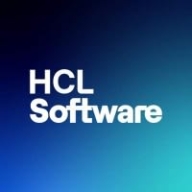

BigFix and Vicarius vRx compete in endpoint management and vulnerability remediation. BigFix has the upper hand due to its comprehensive features and robust customer support.
Features: BigFix offers extensive capabilities in patch management, compliance enforcement, and inventory tracking. It effectively manages a wide range of devices. Vicarius vRx features automated vulnerability assessment, real-time protection, and proactive security measures. The main difference is BigFix’s broad endpoint management versus Vicarius vRx’s focus on vulnerability detection.
Room for Improvement: BigFix needs better reporting functionalities, a more intuitive interface, and streamlined usage of its extensive features. Vicarius vRx requires enhanced integration with other security tools, improved scalability for larger organizations, and better reporting. BigFix users focus on reporting while Vicarius vRx users emphasize integration improvements.
Ease of Deployment and Customer Service: BigFix provides detailed deployment guides and responsive customer service, though the initial setup can be complex. Vicarius vRx has mixed reviews on deployment ease, with some users finding it straightforward and others citing limited documentation as a challenge. BigFix users largely appreciate their support, while Vicarius vRx's customer service, though proactive, can be inconsistent.
Pricing and ROI: BigFix's pricing is seen as reasonable given its extensive capabilities, offering good ROI through efficient endpoint management and reduced downtime. Vicarius vRx is considered pricier but provides strong ROI for organizations prioritizing security. BigFix’s economic advantage is in endpoint management at scale, while Vicarius vRx is valued for its security-specific benefits despite higher costs.
On a scale from one to ten, with ten being the highest quality, enterprise support provides timely responses, typically within four to eight hours.
Technical support from HCL is satisfactory unless there are customization requirements.
Their support is very good, and they respond quickly.
During the POC and the implementation, they were very available and made their best efforts to help us.
Whenever I've contacted them, they respond promptly with a callback or by email.
BigFix requires some minimum configuration requirements.
It is very simple; you just script it, and then the computers connect themselves.
When we attempted to scale this and update 200 systems, that just locked it.
We have some clients with up to a thousand agents.
There are some issues that they do not even know how to fix at this point.
I would rate the stability of Vicarius vRx ten out of ten.
There are some issues like high CPU usage during updates, but these were fixed.
Building a management console is quick and simple, taking only one to two hours for setup.
The problem was related to the hardware configuration and hardware specifications.
In addition to reporting improvements, there should be a feature for application control to allow or disallow certain applications from being executed on endpoints.
I am pretty sure that the tool works great when it comes to Windows, but when you are in an environment that has different flavors of Linux at different version levels, that may pose an issue.
We have the ability to search across the network for all switches, routers, and printers, but some devices might be outdated and have vulnerabilities.
Enhancing Vicarius vRx with improved third-party integrations, like notifications for external systems, and increased cloud integration for richer instance information, would be valuable improvements.
The pricing is pretty good and now follows a subscription model similar to SolarWinds, making it easier for customers to subscribe and unsubscribe.
It was very cheap.
In the past, Vicarius vRx was cheap, but now they have adjusted their pricing policy, resulting in higher renewal costs.
From a pricing perspective, Vicarius was cheaper compared to other competitors.
The BigFix features that have proven most effective include inventory, software delivery, software distribution, software catalog, and both software and hardware management.
I use this mainly to capture inventory for IBM products, and as BigFix was part of IBM, it gets easily integrated with IBM solutions.
BigFix supports something known as Patch Policies, which allows users to define that whenever critical patches are released, they should get evaluated against machines and automatically deploy them.
It's a valuable tool that reduces tension between IT and security teams by providing time to properly install patches.
The system prioritizes vulnerabilities, identifying high, medium, and low risks, allowing us to focus on high-risk applications.
The most valuable feature is the system's ability to provide information about open CVEs and how it compares the local version with available updates.
| Product | Market Share (%) |
|---|---|
| BigFix | 6.6% |
| Vicarius vRx | 3.5% |
| Other | 89.9% |


| Company Size | Count |
|---|---|
| Small Business | 30 |
| Midsize Enterprise | 12 |
| Large Enterprise | 66 |
| Company Size | Count |
|---|---|
| Small Business | 11 |
| Midsize Enterprise | 7 |
| Large Enterprise | 3 |
HCL BigFix is a powerful patch management tool that enables organizations to simply control their patch management operations. It is designed so that IT security and operations teams can collaborate in the most effective way possible. Users that employ BigFix can find and fix issues with their endpoints faster than those that employ its competitors. It comes with thousands of security checks that can be deployed quickly and easily. These enable users to safeguard themselves from a wide variety of digital threats.
HCL BigFix Benefits
Some of the ways that organizations can benefit by choosing to deploy HCL BigFix include:
BigFix Features
Reviews from Real Users
HCL BigFix is a highly effective solution that stands out when compared to most of its competitors. Two major advantages it offers are its auto-patching capability and its user-friendly tools.
Santhosh K., the chief executive officer of Catnip Infotech Private Limited, writes, “The second valuable feature is, BigFix also has an auto patch updating feature, where the latest patches, and what is required for my system are automatically downloaded and kept ready for me. The solution applies the patch and notifies me after applying the patch. BigFix also gives me a ping saying that I should reset my system within a certain period of time, while the patch is being applied. Let's say, the patch is being applied and if there's an issue, the solution can revoke the applied patch, and revert back to the old state.”
Benedikt S., an application administrator, says, “It's very straightforward. The usability is very close to everyday technical tools that you use as a systems administrator. So it's quite user-friendly.”
Vicarius vRx automates patching and vulnerability mitigation with patchless protection, appreciated for effective third-party app patching and vulnerability prioritization. The platform offers streamlined management via intuitive dashboards, consolidating vulnerability discovery and remediation.
Vicarius vRx streamlines the patching and vulnerability mitigation process, delivering automation through patchless protection. It is favored for its ability to handle third-party applications effectively while providing vulnerability prioritization. The platform's intuitive dashboards allow for efficient management, consolidating vulnerability discovery and remediation efforts. Users note the robust scripting engine and supportive community as significant assets in mitigating critical threats, reducing manual effort and remediation time. Despite the strengths, enhancements in areas like automating patchless solutions, simplifying the login process, and refining networking vulnerability scanning capabilities are needed. The patch update process, reporting, and scripting functionalities require improvements. Name changes have resulted in some confusion, and additional filtering options are desired, along with better cloud integration and system feedback on update statuses. Logging options and mobile device management support are sought after by organizations.
What are the key features of Vicarius vRx?Managed service providers utilize Vicarius vRx for compliance needs, focusing on PCI and HIPAA requirements, vulnerability management, and patching. They use it extensively for patch management, covering both Microsoft and third-party updates, and for centralized update management. It aids in achieving visibility and automation, ensuring quick application of necessary patches across numerous assets while enhancing cybersecurity effectiveness with its network functionality and audit compliance features.
We monitor all Patch Management reviews to prevent fraudulent reviews and keep review quality high. We do not post reviews by company employees or direct competitors. We validate each review for authenticity via cross-reference with LinkedIn, and personal follow-up with the reviewer when necessary.